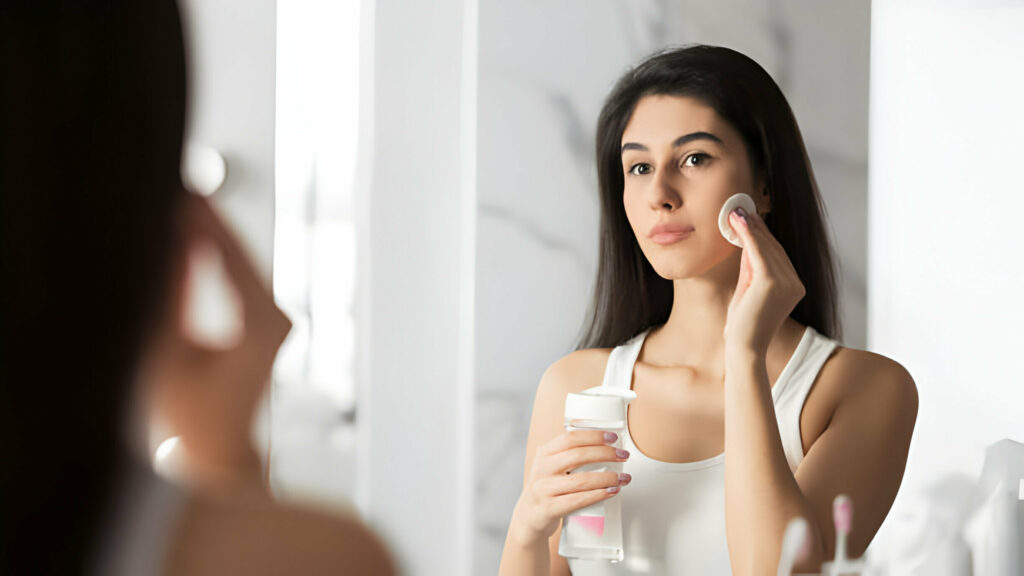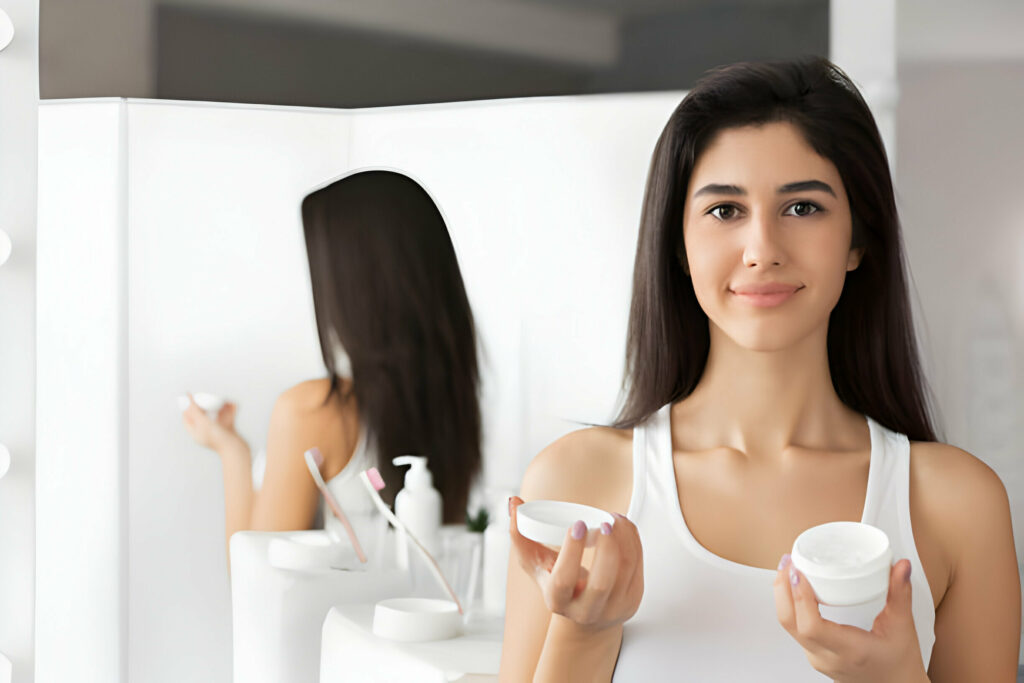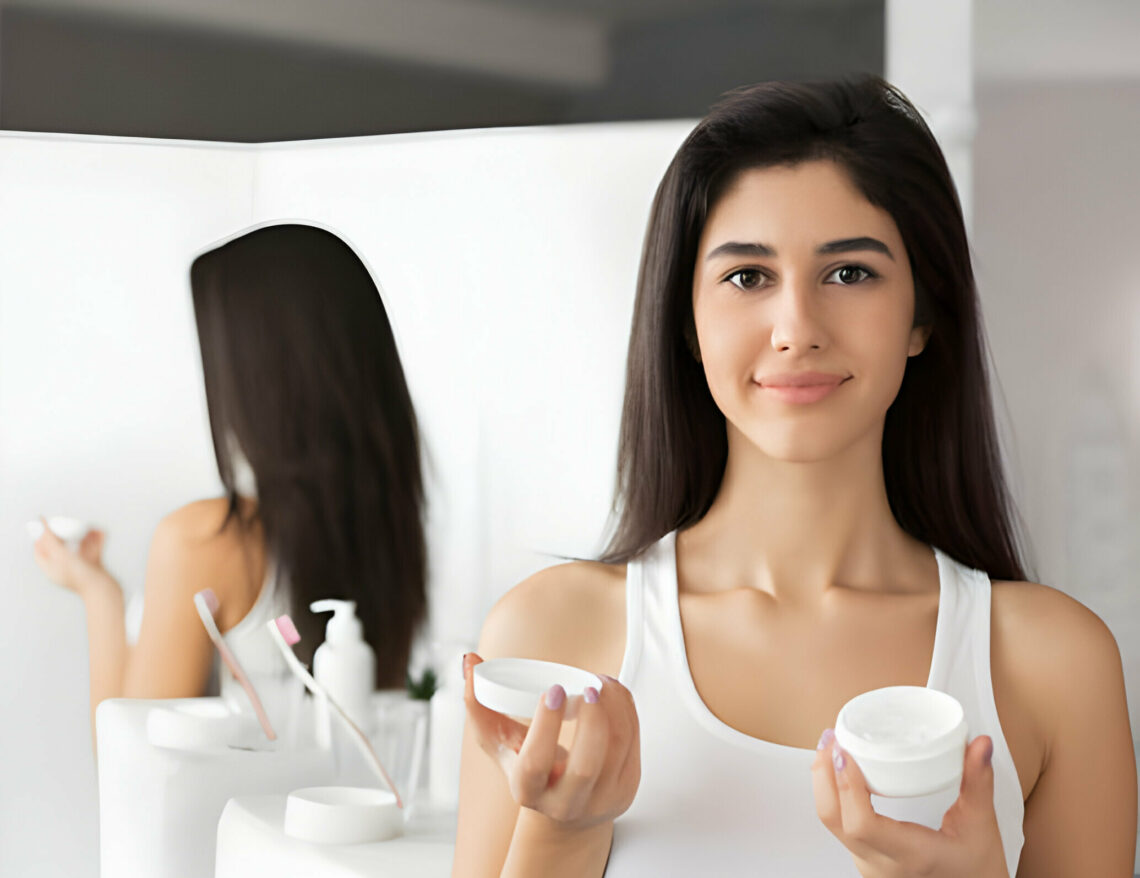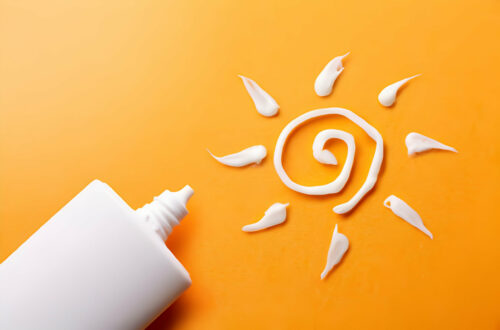Having oily skin is a typical skin issue that can give you a shiny look, but it doesn’t have to come with downsides. The correct skincare routine, including skin care for combination skin, can assist in controlling excess oil and stopping the occurrence of pimples and blackheads.
We chatted with dermatologists to provide you with a skincare plan that will take charge of oily skin.
Top skincare routine for oily skin:
- Cleanse in the morning and evening.
- Exfoliate twice a week at night.
- Apply active treatments to your skin at night.
- Moisturize both in the morning and evening.
- Put on SPF every single day.
A Simple Skin Care Routine for Oily Skin Dr. Shah says, “Having oily skin can be healthy!” The key is to work in harmony with your skin type.
Step 1: Cleansing Rule number one: Wash your face both in the morning and at night. Cleanse before bedtime to remove the dirt that accumulates on your skin during the day. Even if your skin feels fresh, it’s essential to wash your face in the morning.

While you sleep, your skin sheds cells and produces oils. This can lead to breakouts and excessive shine.
Choose a cleanser specially formulated for oily skin. Dr. Shah recommends a mild salicylic acid cleanser like CeraVe SA Cleanser to help unclog pores and remove excess oil.
Pro tip: Regularly change your pillowcase to get rid of sweat, oil, and debris.
Step 2: Exfoliation is a great method to eliminate oil, debris, and dead skin cells that block your pores. Dr. Shah suggests using a chemical exfoliator, like the popular Paula’s Choice 2% BHA Liquid Exfoliant.
Chemical exfoliants work by removing dead skin cells through active ingredients like alpha hydroxy acid (AHA) and beta hydroxy acid (BHA). For oily skin, beneficial AHAs include glycolic acid, while salicylic acid is a trusted BHA for oily-prone skin.
Just be careful not to overdo it. Stick to exfoliating a maximum of twice a week. Excessive exfoliation can lead to dryness, redness, or skin irritation. For those with skin care for sensitive skin, certain ingredients can increase your sensitivity to sunburn, so it’s best to exfoliate at night.

Step 3: Apply Treatment Dr. Shah suggests using a retinol product, like Paula’s Choice 1% Retinol.
Retinol works wonders in lessening the appearance of wrinkles and can even out your skin’s texture by promoting cell turnover. An added benefit is that retinol can combat acne and minimize the appearance of pores.
Generally, products containing active ingredients (such as acids or Retinol) can lead to irritation if overused. So, apply them once a day at most, and sometimes even less. Nighttime is usually preferable, as these activities can heighten your skin’s sensitivity to sunlight.
As pimples are a common concern for those with oily skin, you might consider using an acne treatment instead. Products with sulfur, salicylic acid, or benzoyl peroxide can effectively tackle pimples.
Consult your dermatologist to determine the best approach for your skin goals. Depending on your unique skin situation, whether it’s a tailored skin care routine for men or something else, you could also explore other over-the-counter treatments or potentially opt for a stronger prescription treatment.

Step 4: Moisturize You might believe that adding more moisture to oily skin doesn’t make sense, but in reality, it’s a crucial step in your oily skin care routine.
Dr. Shah suggests using products like Cetaphil Mattifying Acne Moisturizer or CeraVe PM moisturizer.
“Gel moisturizers are often a top choice for people with oily skin,” according to Dr. Shah. He also points out that a moisturizer containing niacinamide can help control oil production.
Usually, moisturizers designed for acne-prone skin are suitable for use on oily skin. Just make sure that your lotion, gel, or cream is:
- Oil-free
- Lightweight
- Water-based
- Free from harsh chemicals or fragrances
- Noncomedogenic

Step 5: Use Sunscreen No matter your skin type, it’s essential to wear sunscreen every day.
“I recommend the EltaMD UV Clear product,” Dr. Shah emphasizes. “Apply it daily. Every single day. Always.”
Even on cloudy or gloomy days, you should consistently use sunscreen with an SPF of 30 or higher in the morning. Just ensure the ingredients list doesn’t include pore-clogging elements like:
- Avobenzones
- Oxyphenones
- Benzophenones
- Methoxycinnamate
- Para-aminobenzoic acid (PABA)
What Ingredients Are Best for Oily Skin? As per Dr. Shah, these superstar ingredients are perfect for oily skin:
- Salicylic acid: This beta-hydroxy acid decreases swelling and clears out pores. For regular use, a 2 percent salicylic solution is generally recommended. You should consider a stronger concentration only if your dermatologist approves. It can be found in many cleansers, as well as in topical spot treatments, serums, and gels.
- Retinol: A type of retinoid derived from Vitamin A, retinol is highly popular for addressing skin issues like fine lines, uneven texture, hyperpigmentation, and photoaging. Research also indicates it’s effective in reducing oiliness.
- Niacinamide: This is a version of vitamin B3 that can assist in regulating the oil production from your sebaceous glands. It also boasts strong anti-inflammatory properties and has been shown to aid in acne treatment according to a 2017 study.

What Causes Oily Skin? “Oily skin happens when our pores’ sebaceous glands produce more sebum,” explains Dr. Shah. “This oil production is influenced by hormones like testosterone and stress hormones.”
Here are a few other factors that could lead to oily skin:
- Age: Oily skin is more common in younger individuals. As you age, your skin loses collagen and other proteins, causing it to produce less oil. Incorporating teenage skin care practices can help manage this skin type effectively during those years.”
- Climate: Living in humid areas might lead to increased oil production. Even in dry regions, you might notice more oil during the hot summer months.
- Genetics: Your parents might be to blame. Genetics plays a significant role in determining your skin type. If your close family members have oily skin, you’re more likely to have it too.
- Pore Size: People with larger pores might produce more oil compared to those with small or average pores.
- Your Current Skincare Routine: Your oily skin might result from using the wrong products. Overwashing or excessive exfoliation can strip away natural oils, causing your skin to compensate by producing more oil.
Additional Skincare Tips for Oily Skin While a good skincare routine is a great start, you might need extra steps to effectively manage excess oil.
Blotting Papers: Blotting paper is a helpful way to control shine and oil during the day. Simply press the paper onto your skin for a few seconds, especially on your T-zone. Watch as the paper absorbs the excess oil, providing a satisfying solution.
Removing Makeup: If you wear makeup, regular cleansers might not be enough. Before washing your face, use an oil-free makeup remover.
Professional Treatments: “Professional treatments are generally not necessary,” says Dr. Shah. “However, blue light can be beneficial for oily skin.”
Some studies suggest that blue light therapy can also assist in treating acne. More research is needed to confirm its effectiveness.
Dr. Shah also mentions that acutane (isotretinoin) is highly effective in reducing oil gland size and production. But remember, it’s often prescribed for severe acne.
Cleansing After Sweating: The American Academy of Dermatology (AAD) recommends cleansing your face after sweating, especially if you can’t shower immediately. This step is crucial to eliminate oil, dirt, and sweat that accumulate during exercise or when outdoors in warm weather.
Final Thoughts: Managing oily skin is usually quite doable. A proper skincare routine can help control shine, clear pores, and decrease oil production. Stick to products designed for oily skin (hint: salicylic acid, niacinamide, and retinol are beneficial). For those dealing with both oily and dry skin issues, it’s important to incorporate skin care for dry skin to ensure balanced hydration. Avoid products labeled as comedogenic, as they can clog pores.
Remember, you might not see immediate results. It might take weeks or even months to notice significant changes. If you don’t observe improvements after a while, consult your dermatologist. They can recommend specific treatments and products tailored to your skin’s needs.





